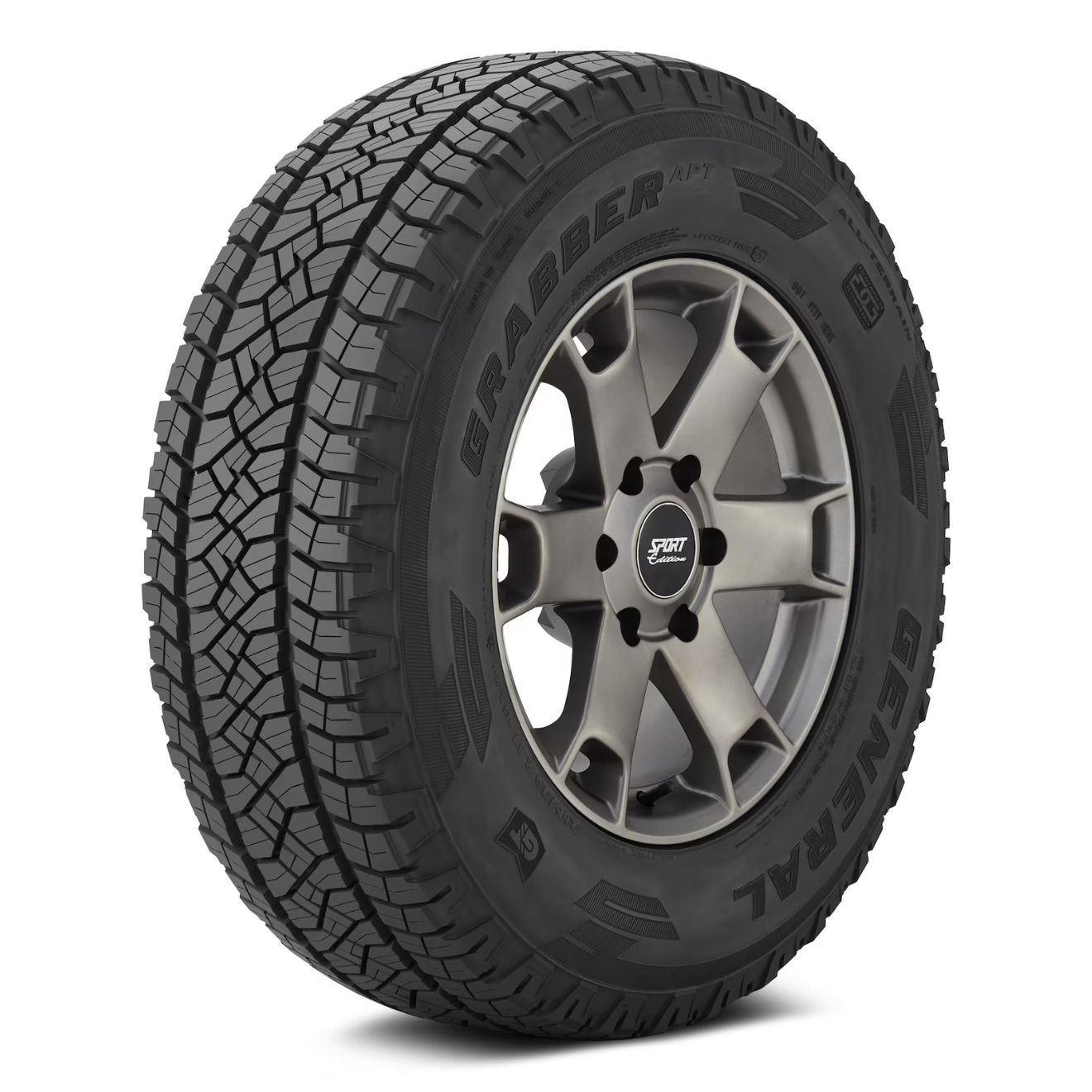As a former Bridgestone field inspector, I’ve seen my fair share of all-terrain tires promising both off-road prowess and highway comfort. Yet, the Michelin LTX AT2 consistently stood out. But does it truly bridge the gap between road and rugged, or is it all smoke and tread? Let’s test-drive its performance across key metrics.
Michelin LTX AT2 shines on dry pavement with agile handling and impressive grip, while holding its own in wet conditions with its wide grooves efficiently channeling water. Don’t underestimate Michelin LTX AT2’s winter capabilities either, as it provides surprising traction on snowy roads. Mileage is exceptional thanks to the deep tread, and you won’t sacrifice fuel efficiency with its optimized design. Off-road, the aggressive tread eats up dirt trails and campsites with ease, although it’s best to leave extreme adventures for others. While a slight hum accompanies the aggressive tread, the ride remains surprisingly comfortable, absorbing bumps and imperfections with ease.
Table of Contents
Tread Design
The LTX AT2’s imposing tread is more than just an aesthetic statement. Deep, aggressive blocks and wide grooves provide exceptional bite on loose surfaces like sand, gravel, and mud. This design excels in off-road scenarios, but its well-balanced layout doesn’t sacrifice on-road performance. Angled sipes further enhance wet traction by efficiently channeling water away from the contact patch, while the overall design optimizes wear for increased longevity.
Tread & Durability
True to Michelin’s reputation, the LTX AT2 lives up to expectations when it comes to durability. Its sturdy build and deep tread design ensure a longer lifespan, providing drivers with more miles before needing to replace their tires. This durability makes it a cost-effective choice for those who enjoy off-road adventures or require a reliable tire for demanding driving conditions.
Sizes
The LTX AT2 offers a broad range of sizes to accommodate various vehicles, including pickup trucks, SUVs, and crossovers. This extensive size selection ensures that drivers can find the perfect fit for their specific vehicle, regardless of its type. The versatility of this tire makes it a suitable choice for a wide range of driving styles and vehicle types, catering to the diverse needs of drivers.
Dry Performance
The LTX AT2 is not only capable off-road but also impresses with its agile handling and remarkable grip on dry asphalt. It exhibits confident cornering abilities with minimal body roll, even at higher speeds. This well-balanced design ensures a composed and predictable driving experience, making it a versatile tire that excels both on and off the road.
Wet Performance
When it comes to wet performance, the LTX AT2 holds its own. Its wide grooves effectively channel water, ensuring a secure grip during heavy rain. While it may not outperform dedicated wet-weather tires, it instills confidence in most rainy conditions, providing drivers with a surefooted experience.
Riding Comfort & Mileage
Despite its aggressive tread, the LTX AT2 delivers a surprisingly comfortable ride. The sidewalls flex effectively to absorb bumps and road imperfections, making for a smooth and cushioned experience. And thanks to its long-lasting tread, you can expect several thousand miles before replacement, even with a mix of on- and off-road driving.
Snow Performance
Despite its all-terrain label, the LTX AT2 performs admirably in winter conditions. Its aggressive tread design effectively channels snow and slush, delivering surprisingly strong traction on snowy roads. While it’s not a dedicated snow tire, it offers peace of mind during frosty commutes and light winter adventures.
Fuel Efficiency
Despite its emphasis on performance and durability, the LTX AT2 manages to excel in the fuel efficiency department. Its thoughtfully designed tread pattern and advanced construction materials work together to reduce rolling resistance, allowing you to maximize your miles per gallon. This makes it an appealing option for drivers who value both capability and fuel economy.
Road Noise
The LTX AT2’s aggressive tread pattern does come with a minor trade-off in the form of road noise. When driving at higher speeds, you may notice some tire hum, but it’s not loud enough to disrupt conversations or music. In the grand scheme of things, the noise level remains manageable, especially when you consider the tire’s impressive on- and off-road performance.
Off-Road Prowess
The LTX AT2 truly shines when you leave the pavement behind. Its aggressive tread pattern provides excellent traction on loose terrain, allowing you to tackle dirt trails, campsites, and light off-road excursions with confidence. While it’s not designed for extreme rock crawling or challenging off-road conditions, it handles moderate off-road adventures exceptionally well. This versatility makes it a reliable companion for those who enjoy exploring off the beaten path.
Conclusion
The Michelin LTX AT2 truly excels in both on-road and off-road environments. It offers remarkable off-road traction, unexpected on-road handling prowess, and respectable winter performance, all while maintaining a comfortable and surprisingly fuel-efficient profile. While it may not be the absolute quietest or the most aggressive off-roader on the market, its overall balance and the legendary Michelin quality make it an enticing choice. Whether you’re a seasoned off-road enthusiast or someone who enjoys occasional adventures, the LTX AT2 is a tire that demands serious consideration. It’s more than just an all-terrain tire; it’s an open invitation to bridge the gap between the paved roads and the wilderness, providing both comfort and capability for your journeys.
















